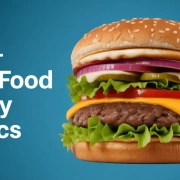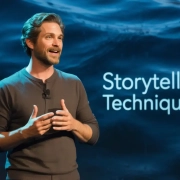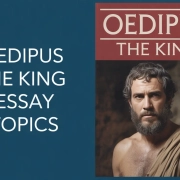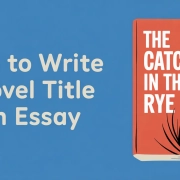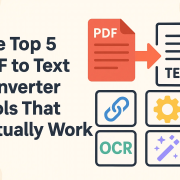255+ Fast Food Essay Topics To Spark Your Creativity
Fast food is one of the most talked-about parts of modern life, and it shows up in school debates, research papers, and even daily conversations about health and culture. Students often need strong fast food essay topics when starting essay writing or planning a research project. This article puts together a wide range of topic ideas that can work for any essay or research paper on the subject. From the role of companies like KFC to the impact of advertising on children, there are many angles worth exploring. Writers can also take inspiration from works like Fast Food Nation by Eric Schlosser, which exposed the hidden sides of the industry.
Whether you are looking for a free essay sample, brainstorming for a class assignment, or searching for unique essay writing ideas, this list gives you plenty of choices and can help shape strong and engaging papers.
Key Takeaways
- The introduction highlights how fast food connects to daily life, research, and debates, making it an essential subject for essay writing and research projects.
- Students are provided with structured topic ideas ranging from advertising, culture, and consumer behavior to health risks, obesity, and preventive healthcare.
- The article shows how global companies like McDonald’s, KFC, Subway, Burger King, and Wendy’s shape food culture, marketing, and consumer choices across societies.
- Writers are encouraged to explore themes inspired by Eric Schlosser’s Fast Food Nation, as well as modern issues such as food insecurity, sugar taxes, and processed food safety.
- The topics are arranged in categories including general essays, debatable subjects, research titles, comparison themes, argumentative papers, and practical questions to guide students step by step in selecting essay or research paper ideas.
🏆 Best Essay Topics on Fast Food
- Impact of advertising on youth eating patterns
- Burger King’s role in shaping global food culture
- Calorie intake awareness among frequent fast-food customers
- Harmful effects of chemical substance preservatives in fast foods
- Influence of fast food consumption on child obesity rates
- Expansion of fast food in China and its health consequences
- Links between chronic condition risks and frequent junk food consumption
- Consumer perceptions of healthy diet options in fast food menus
- Negative effects of fast food consumption on cooking traditions
- How fast-food restaurant growth affects cultural eating practices
- Customer loyalty strategies in the fast food industry
- Role of diabetes management in reducing food-related diseases
- Fast food culture and its effect on society
- Marketing influence on eating fast food habits
- Obesity as a result of unhealthy food environments
🔝 Top-10 Food Essay Topics
- Disease prevention through preventive healthcare policies
- Increasing eating disorders linked with junk food advertisements
- An epidemic of obesity fueled by the fast-food nation culture.
- Eric Schlosser’s fast food nation and its relevance today
- Fast-food restaurant impact on global food chain dynamics
- Relationship between fat consumption and health risks
- Role of food energy in diet and nutrition choices
- Food industry challenges in maintaining food safety standards.
- How France preserves traditional food culture despite fast food growth
- The rise of French fries consumption in the United States
- Grammar and punctuation in persuasive fast food advertising
- Hamburger popularity and its influence on food production
- Health consequences of sugary drink tax policies
- The connection between junk food consumption and diabetes
- How KFC’s marketing strategy transformed the fast food market
Get Expert Writing Help
Struggling with fast food essay topics? Place your order today by clicking the ORDER NOW button above to get our expert writing help, plagiarism free paper.
✍️ Fast Food Essay Topics for College
- Management practices in fast food companies
- Marketing strategy of McDonald’s and customer engagement
- Meal portion sizes and their impact on obesity
- Nutrition education as a solution to fast food consumption
- Paper packaging sustainability in fast food restaurants
- Global influence of pizza chains on food culture
- Porter’s five forces analysis of the fast food industry
- Preventive healthcare strategies against unhealthy food choices
- Restaurant business models in the fast food market
- Revenue growth trends in fast food chains worldwide
- Salt overconsumption in convenience food meals
- Effects of shopping behavior on food choices
- Snack preferences and exposure to fast food advertisements
- Influence of taste preferences on food environment shaping
- Subway’s role in promoting healthier food options
🥇 Most Interesting Fast Food Research Titles
- Sugar content in fast foods and public health consequences
- Effectiveness of sugary drink tax in reducing obesity rates
- Fast food taste versus nutrition trade-offs in society
- United States fast food culture compared to homemade food traditions.
- Wendy’s competitive positioning in the global fast food chain
- Impact of fast foods on food security in developing countries
- Evolution of fast food restaurant branding strategies
- Food industry regulations and food safety challenges
- Influence of fast food consumption on food insecurity growth
- Junk food’s effect on food production sustainability
- How fast food nation shaped food advertisements worldwide
- Negative outcomes of consuming fast food on food poisoning rates
- Increased consumption of fast food and contamination of food issues
- Food environment changes due to the expansion of fast food culture.
- Kind of food served in traditional versus fast food outlets
Read Also: 540+ Unique Nutrition Research Topics to Explore This Year
🍔 Fast food research paper topics on fast food restaurants
- Homemade food versus fast food nutritional differences
- Accessibility of food options in urban fast food culture
- Many fast food outlets and their influence on food insecurity
- How fast food became a dominant force in food services
- Fast food has become a leading factor in food poisoning outbreaks.
- Fast food is popular due to marketing strategies and consumer demand.
- Junk food has become a normalized part of food culture.
- Artificial additives used in food served at fast-food restaurants
- Impact of many fast food outlets on the quality of the food environment quality
- Food is one of the largest industries affected by fast food chains.
- Growth of fast food and its role in food market expansion
- Consequences of consuming fast food on long-term health risks
- Increased consumption of fast food is linked to exposure to fast food advertising.
- Role of fast food in shaping food choices among youth
- Traditional food preservation amidst processed food growth
🌶️ Debatable Food-related Topics for Presentation
- Food additives in processed food and their safety concerns
- Consuming fast food versus homemade food in preventive healthcare
- Increased consumption of fast food linked to chronic disease prevalence
- Exposure to fast food advertising and its psychological impact on children
- Consumption of junk food compared to traditional food meals
- Health risks from food contamination in fast food outlets
- Growth of fast food versus sustainable food production
- How food served in restaurants shapes eating habits
- Contamination of food during large-scale food processing
- Food environment shaped by convenience food demand
- Kind of food promoted in marketing versus dietary needs.
- Homemade food is a healthier option than processed food.
- Many fast food chains and their role in food insecurity
- Accessible food choices and the rise of fast food consumption
- Impact of food options on consumer dieting decisions
Read Also: 100+ Controversial Food Topics That Spark Heated Debates Today
💡 Simple Fast Food Essay Ideas
- Fast food has become part of modern food culture.
- How fast food has become an alternative to cooking
- Fast food is popular due to its convenience and low cost.
- Junk food has become a cultural norm in the food nation.
- Ingredients used in food and their role in health risks
- Many fast food outlets are transforming traditional shopping habits.
- Food is one of the most powerful cultural expressions.
- Exploring how food choices affect society’s health
- The fast food industry is shaping food advertising strategies.
- Influence of fast food consumption on school children’s health
- Food insecurity challenges are linked to increased junk food consumption.
- Processed food effects on food safety regulations
- Rising trend of food poisoning linked to fast food contamination
- Role of fast food restaurants in shaping modern culture
- How fast food culture affects family mealtime traditions
👍 Good Food Essay Topics to Write about
- Traditional food preservation versus fast food expansion
- Popular food items in different societies and their meanings
- Growing demand for food options in the fast food market
- Effects of convenience food on healthy diet practices
- How processed food undermines food safety and nutrition
- Rising food poisoning risks due to fast food contamination
- Impact of consuming fast food on obesity rates
- Increased consumption of fast food in urban centers
- Exposure to fast food marketing strategies and dieting challenges
- Food advertising targeting children and its ethical implications
- Role of food additives in increasing health risks
- Contamination of food in large-scale food production systems
- Food environment shaped by accessible food outlets
- Homemade food as a preventive healthcare solution
- Junk food consumption and its cultural acceptance
Fast Food Essay Support
Need a paper on KFC, Eric Schlosser, or any food industry topic? Order now for a custom-written, plagiarism free essay or research paper.
💡 Exciting Food Topics to Research
- The connection between fast food and obesity in youth
- How food consumption patterns differ across cultures
- Eating fast food and its impact on food security
- Effects of unhealthy food on long-term health outcomes
- Role of food choices in managing chronic conditions
- Junk food consumption compared to healthy diet alternatives
- Preventive healthcare programs targeting food-related diseases
- Marketing fast food to children versus ethical advertising standards
- Influence of food production on environmental sustainability
- Exploring food culture shifts due to fast food advertising.
- Food advertisements shaping taste preferences in society
- How food has become both a commodity and a social identity
- Schlosser’s analysis of Food Nation and global eating habits
- Impact of fast food in schools on child nutrition
- Convenience food and the decline of traditional cooking practices
🎓 Popular Nutrition and Food Topics to Talk About
- Nutritional differences between processed food and homemade food
- Role of food insecurity in poor diet and obesity rates
- Fast food culture is shaping modern eating practices..
- Health risks of junk food consumption in children
- Fast food items are high in fat, salt, and sugar
- Preventive healthcare through better food choices and awareness
- How consuming fast food undermines dieting strategies
- Increased consumption of fast food and its link to diabetes
- The obesity epidemic is driven by exposure to fast food advertising.
- Impact of food insecurity on chronic disease growth
- The connection between food advertisements and the consumption of junk food
- Food options in urban environments versus rural diets
- Food services are adapting to consumer demand for healthy meals..
- Growth of fast food chains and their nutritional concerns
- Impact of unhealthy food on disease management
Read Also: 130+ Engaging Food Debate Topics to Stimulate Thoughtful Discussions
👍 Fast food research topics: obesity
- Obesity trends linked to fast food consumption in the United States.
- Childhood obesity and exposure to fast food advertising
- Fast food consumption and the obesity epidemic in modern society
- Role of junk food in increasing obesity-related health risks
- Diabetes management and obesity prevention through dietary changes
- Obesity growth is fueled by the consumption of junk food in schools.
- Link between sugary drink tax and obesity reduction efforts
- Obesity caused by increased consumption of fast food snacks
- Role of fat and calorie-dense foods in obesity growth
- Obesity prevalence in cultures influenced by Fast Food Nation
- Obesity rates and consumer shopping habits for processed food
- Preventive healthcare approaches to tackling the obesity epidemic
- Relationship between fast food restaurant density and obesity growth
- Marketing strategies of fast food chains targeting children and obesity rates
- Obesity as a chronic condition caused by the fast food industry practices
🍎 Topics about the fast food industry
- Fast food industry revenue growth and customer behavior
- The fast food industry’s influence on food culture worldwide
- Fast food industry marketing strategy and consumer psychology
- Role of McDonald’s in shaping the fast food industry
- KFC’s contribution to the growth of the fast food industry
- Fast food industry expansion in China and health consequences
- Food industry supply chain challenges for fast food restaurants
- Fast food industry and Porter’s five forces analysis
- Impact of food industry advertising on food consumption patterns
- The fast food industry’s effects on traditional food markets
- Food industry’s response to growing preventive healthcare demand
- The fast food industry’s role in food insecurity and nutrition gaps
- Management strategies in leading fast food companies
- Consumer loyalty in the fast food industry and branding
- The fast food industry’s role in shaping the food environment
Read Also: 352+ Christianity Essay Topics
🍔 Food Argumentative Essay Topics
- Fast food advertising should be regulated to protect children
- Exposure to fast food advertising increases unhealthy food choices.
- Junk food consumption is a major cause of chronic disease.
- Fast food in schools undermines healthy diet education.
- Sugary drink tax effectiveness in reducing obesity rates
- Food additives in fast food should be banned due to health risks.
- Preventive healthcare policies can reduce fast food-related diseases.
- Fast food restaurants encourage food insecurity in poor communities.
- Junk food consumption weakens food safety and public health.
- Many fast food outlets increase the risk of obesity in urban areas.
- Traditional food preservation is superior to processed food production.
- Fast food has become a symbol of convenience, but it worsens health outcomes.
- Homemade food should replace fast food for the healthy society growth of a society.
- Food advertising targeting children should face stricter regulations.
- Fast food consumption is responsible for the epidemic growth in obesity
📝 Topics on the harm of fast food
- Health risks from chemical substance additives in fast food
- Junk food consumption leads to diabetes and chronic conditions.
- Fast food culture is increasing the spread of unhealthy eating habits.
- Contamination of food in fast food restaurants and poisoning risks
- Fast food is popular, but it is directly linked to the obesity epidemic.
- Junk food has become a threat to preventive healthcare efforts.
- Consuming fast food increases exposure to unhealthy fats and salt.
- Negative role of fast food in food poisoning outbreaks
- Increased consumption of fast food raises the risk of chronic disease.
- How fast food advertising misleads consumers about nutrition
- Fast food nation as a symbol of the growth of food insecurity growth
- Harm caused by unhealthy food in child development
- Impact of junk food consumption on disease management costs
- Cultural harm caused by fast food replacing traditional food
- Society’s health is declining due to fast food consumption habits
Write My Essay Today
Want expert guidance on Schlosser, fast food nation, or obesity research? Place your order now for 100% original and plagiarism free essay writing help.
🎓 Fast Food Vs Home Cooked Meals: Contrast and Comparison Topics
- Food energy differences between fast food meals and homemade food
- Fast food consumption versus home cooking in managing diet
- Cultural values tied to traditional food compared to fast food culture
- Meal portion control in fast food restaurants versus homemade food
- Taste preferences in convenience food compared to home cooking
- Fast food advertising compared to family food traditions
- Fast food is popular due to accessibility, unlike homemade meals.
- Junk food has become easier to buy compared to the effort of home cooking.
- Food additives in processed food versus natural ingredients at home
- Health benefits of home cooking compared to eating fast food
- Fast food has become central to urban society, unlike rural cooking culture.
- Homemade food’s role in preventive healthcare versus fast food harm
- Consumer satisfaction with fast food restaurants versus family meals
- Fast food culture compared to food security in home-based diets
- Nutritional outcomes of eating fast food versus cooking at home
🅰️➕ A+ Food Essay Examples
- Influence of food culture on family traditions and eating habits
- Role of food advertisements in shaping consumer perceptions of nutrition
- Impact of junk food consumption on child academic performance
- Fast food nation as a reflection of society’s convenience-driven mindset
- Food insecurity challenges and their link to increased consumption of fast food
- Comparative study of traditional food in France and fast food in the United States
- Marketing strategy analysis of Subway and its focus on healthier food options
- Relationship between food safety regulations and consumer trust in food services
- Effects of sugary drink tax on reducing junk food consumption in urban areas
- Role of fast food restaurants in spreading globalized food culture
- Preventive healthcare approaches to reducing unhealthy food choices in schools
- Evolution of pizza as a cultural symbol in the global food market
- Eric Schlosser’s contribution to exposing the food industry through Fast Food Nation
- Comparison of food security policies in China and the United States
- Impact of convenience food on modern shopping behaviors and consumer health
Read Also: 195+ Senior Thesis Topics for Undergraduates
❓ Fast Food Research Questions & Topics about Food
- How does advertising influence children’s food choices in the fast food culture?
- What role does Burger King play in shaping modern food industry practices?
- How does calorie labeling affect consumer eating decisions in fast food restaurants?
- What chemical substance preservatives are most harmful in processed food items?
- How does exposure to fast food affect child obesity rates in schools?
- Why is China experiencing the rapid growth of fast food chains compared to traditional food?
- What chronic condition risks increase with the consumption of junk food?
- How do consumer perceptions of food advertisements influence the consumption of fast food in Fast Food Nation?
- What effect does fast food consumption have on cooking traditions in different societies?
- How does customer loyalty impact revenue in the fast food industry?
- What role does diabetes management play in reducing risks from eating fast food?
- How has Eric Schlosser’s fast food nation influenced debates on food security?
- What impact do French fries and sugary drink tax policies have on obesity prevention?
- How does McDonald’s marketing strategy compare with Subway and Wendy’s?
- What kind of food environment results from increased consumption of fast food?
With a passion for education and student empowerment, I create blog content that speaks directly to the needs and interests of students. From study hacks and productivity tips to career exploration and personal development
academhelper.com academhelper.com
"Looking for a Similar Assignment? Get Expert Help at an Amazing Discount!"


